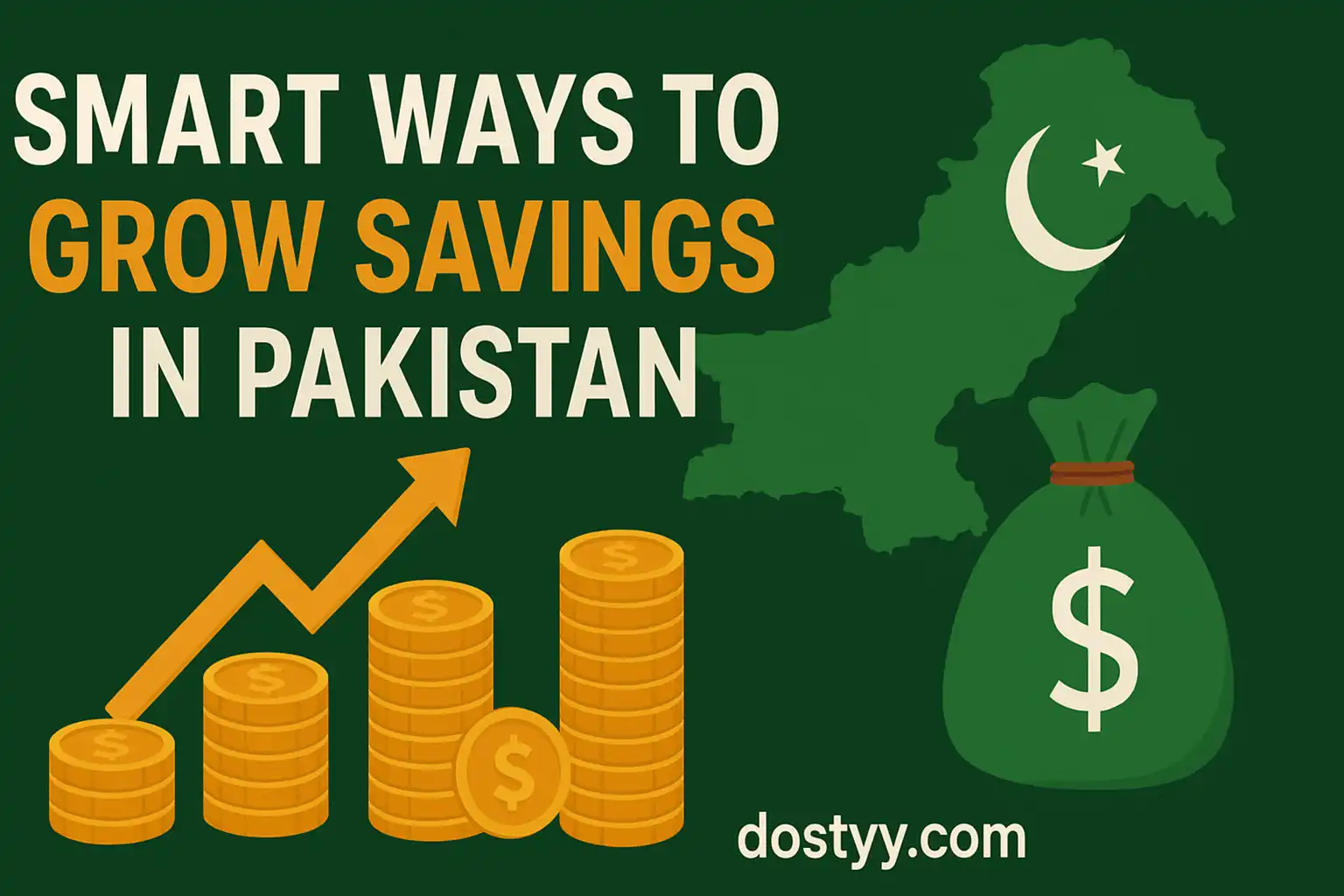
Smart Ways to Grow Savings in Pakistan
- Sep 8, 2025
- 0
In Pakistan today, the middle class famlies faces a financial dilemma. Many people manage to save around 2 to 5 lakh rupees over years of hard work, but inflation quickly reduces the real value of that amount.
• Inflation Rate 2025 (Pakistan): hovering around 24 to 26%.
• Bank saving account returns: typically 7 to 10%.
• Result: Your saving is losing value each year if it just sits idle in the your house locker or bank.
This makes it essential to explore business ideas and legal investment schemes that can grow your savings, protect your money against inflation, and create additional income streams.
Step 1: Understand Your Financial Goals
Before investing your 2–5 lakh, ask yourself:
1. Do I want quick cash profit (monthly income)? Consider small businesses.
2. Do I want safe, long-term growth? Consider savings schemes, bonds, or mutual funds.
3. Do I want a mix of risk and reward? Try e-commerce, food stalls, or small retail ventures.
Golden Rule: Never invest all your savings in one place. Split your investment into low-risk + high-potential options.
Step 2: Evaluate Risk vs. Return in Pakistan (2025)
| Option | Investment Needed | Risk Level | Potential Return |
|---|---|---|---|
| Home Based Business | 2–3 lakh | Low to Medium | 15–30% per month (if successful) |
| Food Stall / Small Retail | 3–5 lakh | Medium | Daily cash flow, 20–35% ROI |
| E-commerce / Online Shop | 2–5 lakh | Medium | 25–50% annually |
| Real Estate Plot Files | 2–5 lakh | High | 30–60% (long-term, 2–5 years) |
| National Savings / Prize Bonds | 2–5 lakh | Very Low | 12–16% annually |
| Mutual Funds / Islamic Term Deposits | 2–5 lakh | Low | 14–18% annually |
As you can see, safe options give steady but smaller returns, while businesses can multiply income but carry more risk.
Step 3: Explore Smart Business Ideas
1. Start Home Based Business
Home based businesses are flexible, low cost, and ideal for women, students, or anyone looking to work from home. Examples include:
• Clothing Boutique Online: Buy wholesale clothes and resell via social media platforms like facebook, Instagram.
• Food & Tiffin Service: Demand is high in urban areas with working professionals.
• Freelancing Setup: Invest in a laptop, internet, and courses for freelancing (graphic design, video editing, writing).
Read more on profitable home-based business ideas in Pakistan.
2. Small Retail or Food Stall
Food is a never-ending demand in Pakistan. With a 4–5 lakh setup, you can start a:
• Tea & snacks kiosk
• Burger, Shawarma or roll paratha stall
• Icecream, Fresh juice or milkshake counter
• Mini bakery
Why it works: Daily cash flow.
Risk: Competition is high, so location and taste matter.
3. E-Commerce & Online Selling
Pakistan’s e-commerce market is projected to grow by 20% in 2025. With small investment:
• Sell electronics, clothes, or gadgets on Daraz or OLX.
• Run a Facebook page shop.
• Start dropshipping (no stock needed, just marketing).
Pro tip: Focus on products with daily demand like mobile accessories, women’s fashion, and home essentials.
4. Real Estate Micro-Investment
While buying property outright may require millions, 2–5 lakh can still get you started through:
• Plot files in developing societies.
• Installment plans for small residential plots.
Risk: Only buy from trusted and approved housing schemes (avoid scams).
Return: If held 3–5 years, can give 40–60% profit.
5. Side Businesses for Employees
If you have a job but want extra income:
• Rent out bikes for delivery riders.
• Open a photocopy/printing shop near schools/offices.
• Start a mini rental service (chairs, tents, projectors for events).
For more, check side business ideas for employees in Pakistan.
Step 4: Consider Legal & Safe Investment Schemes
If business feels risky, Pakistan offers legal and government-backed investment schemes:
1. National Savings Schemes (Behbood, Defence Savings Certificates): 12–16% annual returns, safest option.
2. Mutual Funds (via banks/AMCs): Professionally managed, returns 14–18%.
3. Islamic Banking Deposits: Shariah-compliant and safe, steady profits.
4. Government Bonds: Fixed return, secure but lower liquidity.
Why choose these?
• Zero business risk
• Ideal for older people or those wanting stress-free growth
Step 5: Factor in Inflation
Let’s say you saved 5 lakh rupees in 2025.
• If kept in a bank account (7% profit): After 1 year → 5.35 lakh. But inflation (25%) reduces real value → worth only 4 lakh in today’s terms.
• If invested in a food stall (25% profit): After 1 year → 6.25 lakh, plus regular monthly cash flow.
• If in National Savings (14% profit): After 1 year → 5.7 lakh, safer but still losing slightly against inflation.
Lesson: To beat inflation in Pakistan, combine safe schemes + small business for best results.
Step 6: Step-by-Step Investment Guidance (Practical Plan)
Here’s how a middle-class family with 5 lakh savings can divide investment smartly:
1. 2 lakh in Safe Investments → National Savings / Islamic Deposit (low risk).
2. 2 lakh in Business → Home-based business or e-commerce (medium risk, high return).
3. 1 lakh Emergency Fund → Keep liquid cash for emergencies.
This way, you protect part of your savings while also creating growth opportunities.
Final Thoughts
In Pakistan’s current financial climate, simply saving money is not enough. The smart approach is to:
• Start a small business for daily/monthly income.
• Invest in safe schemes for long-term security.
• Diversify to reduce risk.
With 2–5 lakh rupees, you can turn your savings into a foundation for financial freedom. The key is not to wait start today, stay consistent, and keep reinvesting your profits.




